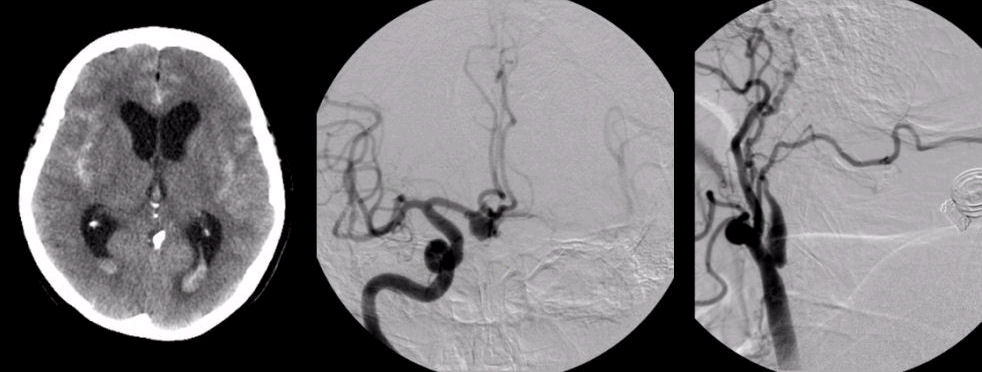
A 23 year-old woman developed the lightening onset of an explosive headache followed by nausea and vomiting.

![]()
![]()
![]()
(Left) Axial CT Scan, (Middle) AP right internal carotid angiogram; (Right) Common carotid artery angiogram. On the CT scan, note the subarachnoid blood in the sulci and posterior horns of the lateral ventricles. On the internal carotid angiogram, the source of the bleeding is clearly seen - there is an anterior communicating artery aneurysm. However, on the common carotid injection, the internal carotid artery is narrow and beaded (red arrows). This is the picture of fibromuscular dysplasia (FMD). FMD is an arterial disease which often affects the renal arteries (presenting as renovascular hypertension) or the internal carotid arteries (presenting as TIA, stroke or intracranial aneurysms). Other arteries affected by FMD include the vertebral, lumbar, mesenteric, celiac, hepatic, and iliac arteries. FMD is a disease of unknown etiology. It is most common in younger and middle-aged women. Some studies have described an association with alpha-1 antitrypsin deficiency. Other proposed etiologic factors include hormonal effects on smooth muscle, mechanical stress on the wall of affected arteries, and mural ischemia in dysplastic vessels.
Revised
05/03/06.
The Electronic Curriculum is copyrighted 1998, Case Western Reserve University
School of Medicine.